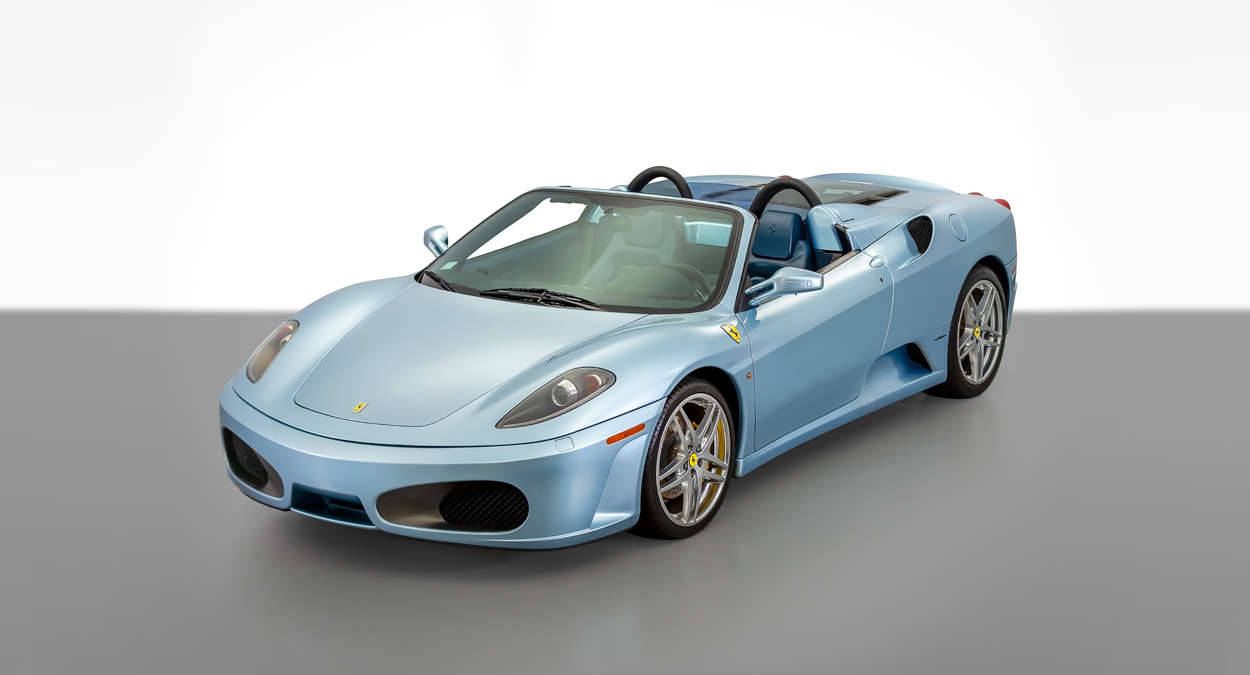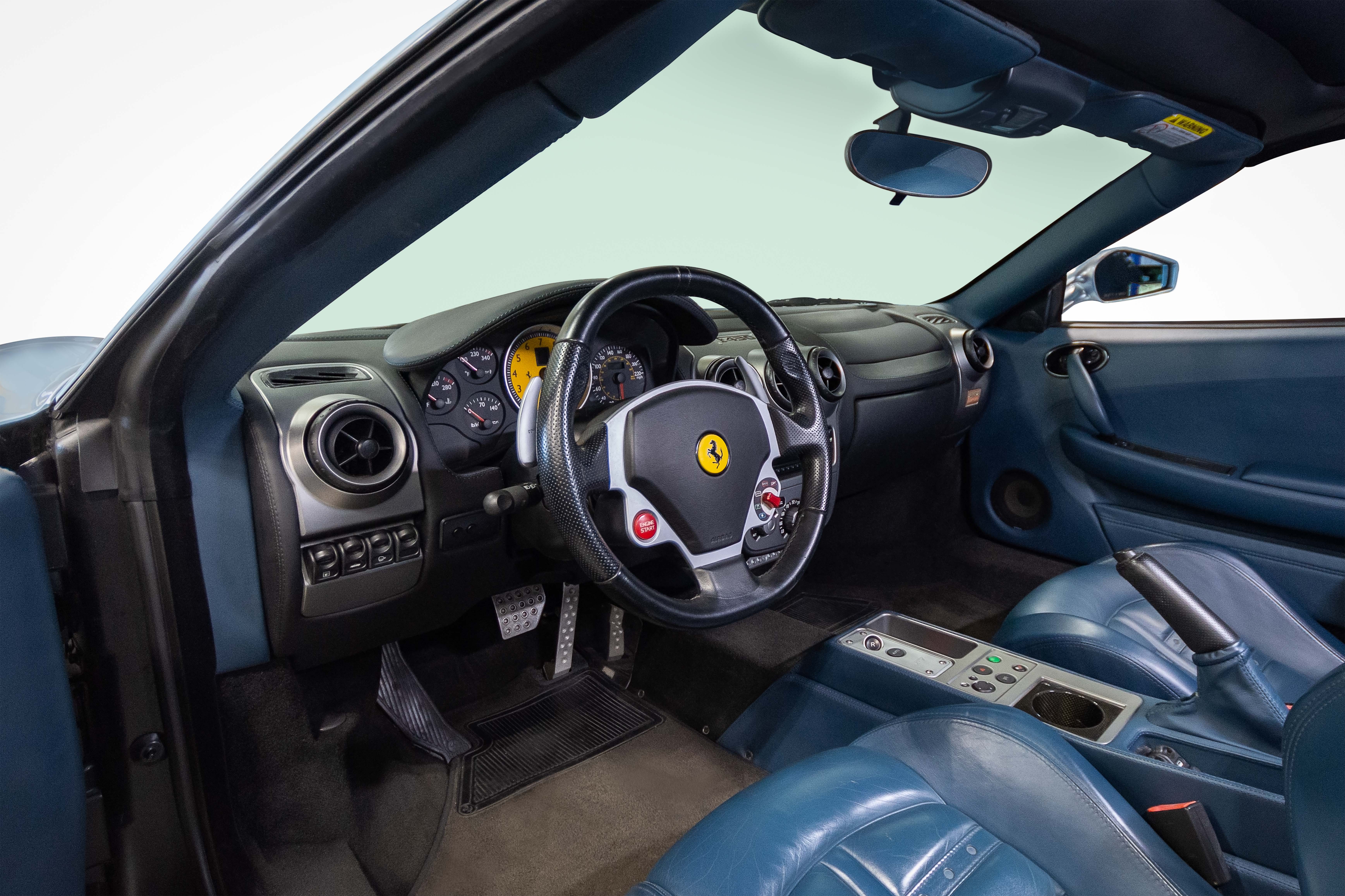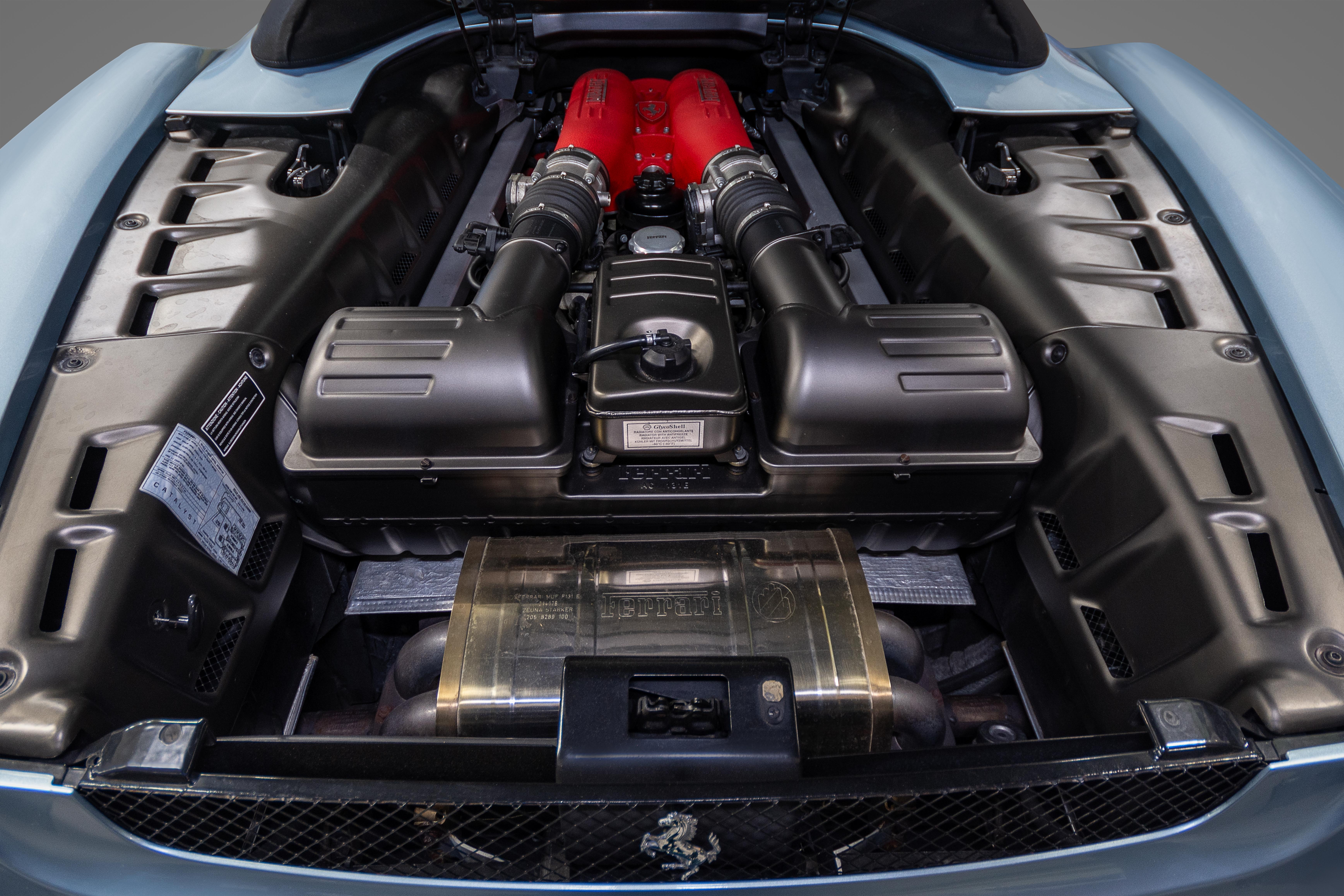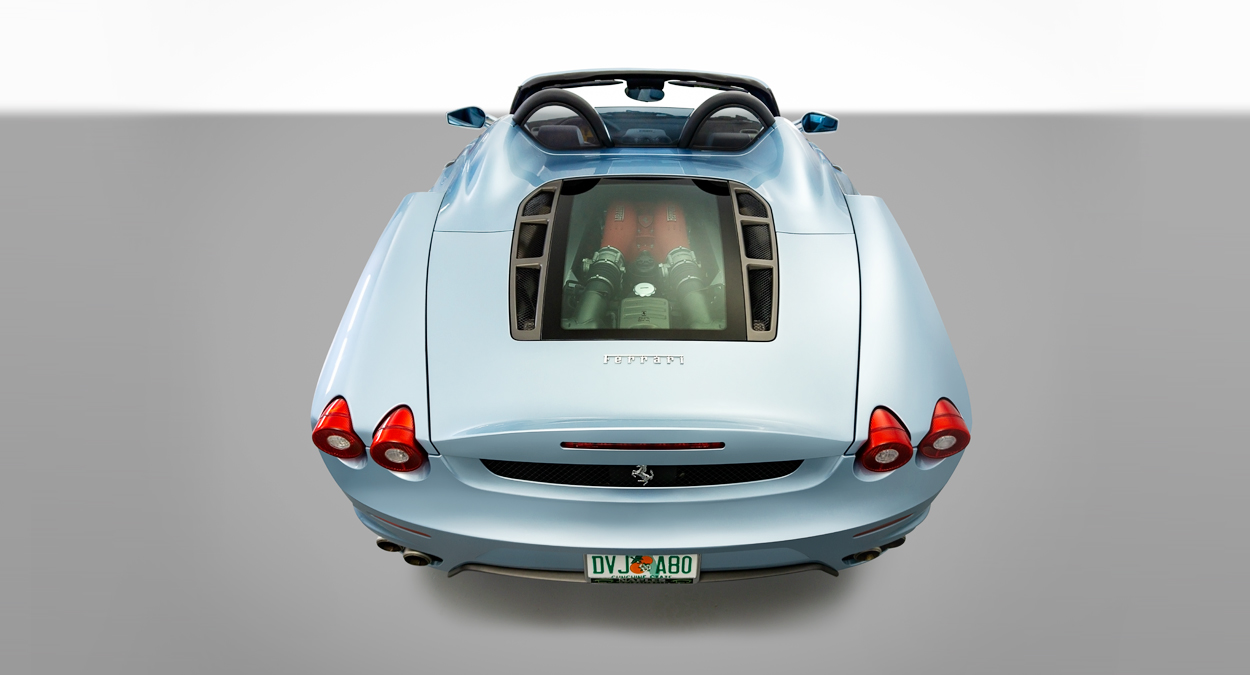
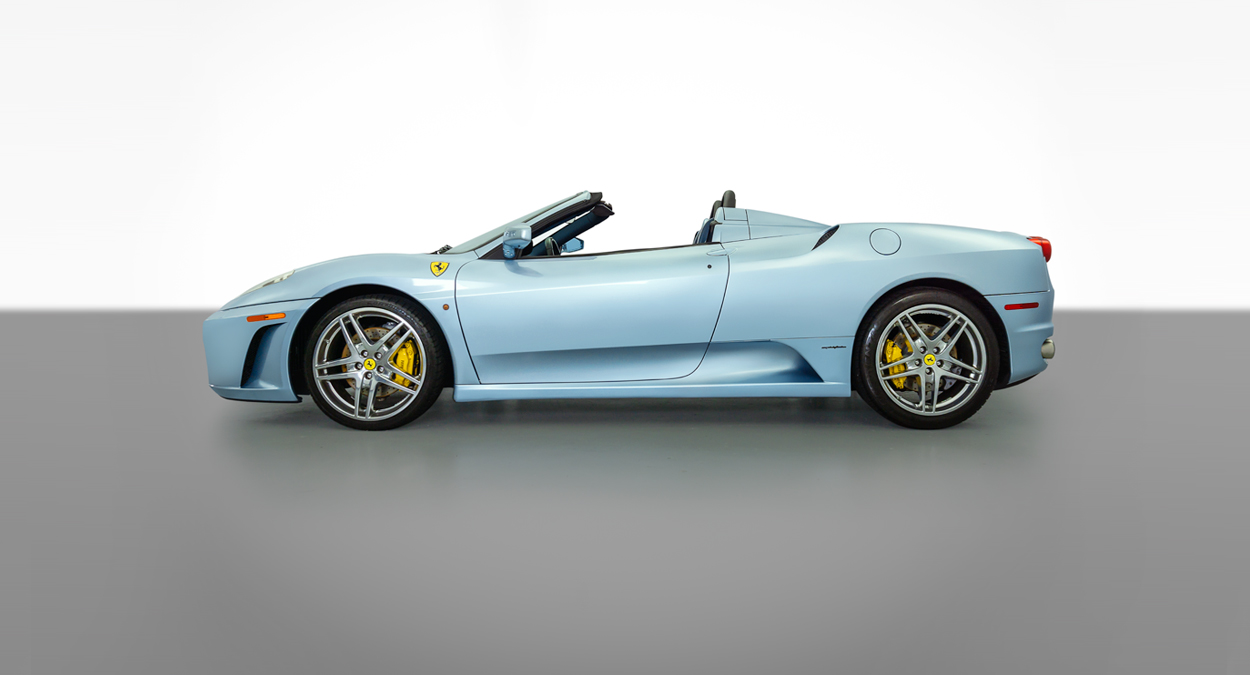
2005 Ferrari F430 Spider F1
Click any photo to view fullscreen. Mobile users can pinch to zoom. Tap ‘X’ to close.
SPEED
SPECIFICATIONS
- Mileage 1337
- DOHC 32-Valve V-8, aluminum block and heads with port fuel injection 4308cc engine
- Electronic Rear Differential
- Steering Wheel mounted “Manettino” Commutator Switch
- Alcoa aluminum chassis
- Molybdenum/cast-iron alloy disc brakes
- E-Diff, a computer-controlled limited slip active differential
- Skyhook Electronic Suspension System
2005 Ferrari F430 Spider F1
Ferrari’s new drop-top includes a number of important technical features which give hints of the car’s F1 pedigree, starting with the innovative electronic differential – first developed by the racing division for the Scuderia’s all-conquering F1 cars – which improves traction and road holding under all conditions. The Spider also features the steering wheel-mounted commutator switch, known to the Scuderia’s drivers as the “manettino’, which allows the car’s set-up to be adjusted easily and quickly.
The F430 Spider’s shape is the result of lengthy testing and features a pronounced nolder which is integrated into the end of the engine cover, new bigger rear air intakes that emphasize the car’s muscular stance, and a new rear valance that incorporates a diffuser of competition derivation. The engine itself is attractively set below a glass cover.
The F430 Spider boasts a compact, fully automatic electric hood that always allows the engine to be seen in all its glory and which, once lowered, takes up relatively little space, despite the uncompromising central-rear engine layout.
The F430 Spider is powered by Ferrari’s new 490 hp, 4,308cc 90° V8 which is capable of pushing the car to a top speed of over 310 km/h (over 193 mph) and covering the 0-100 km/h (0-62 mph) sprint in just 4.1 seconds. This lightweight and highly compact power unit produces a specific output of 114 hp per liter with a weight-to-power ratio of 2.9 kg (6.4 lbs.) per horsepower (dry weight).
The F430 features a 4,308 cc (4.3 L) V8 engine of the “Ferrari-Maserati” F136 family. This new power plant was a significant change for Ferrari, as all previous Ferrari V8’s were descendants of the Dino racing program of the 1950s. This fifty-year development cycle came to an end with the entirely new engine used in the F430, the architecture of which replaced the Dino-derived V12 in most other Ferrari cars. The engine’s output specifications are: 490 PS (360 kW; 483 hp), at 8,500 rpm and 465 N⋅m (343 lb⋅ft) of torque at 5,250 rpm, 80% of which is available below 3,500 rpm. Despite a 20% increase in displacement, engine weight grew by only 4 kg (8.8 lb) along with a decrease in diameter for easier packaging. The connecting rods, pistons and crankshaft were all entirely new, while the 4-valve cylinder head, valves and intake trumpets were directly retained from Formula 1 engines, for ideal volumetric efficiency. The F430 has a top speed in excess of 315 km/h (196 mph) and can accelerate from 0 to 97 km/h (60 mph) in 3.6 seconds, 0.6 seconds quicker than the old model.
The brakes on the F430 were developed in close cooperation with Brembo and Bosch, resulting in a new cast-iron alloy for the discs. The new alloy includes molybdenum which has a better heat dissipation performance. The F430 was also available with the optional Carbon fiber-reinforced Silicon Carbide (C/SiC) ceramic composite brake package. Ferrari claimed the carbon ceramic brakes will not fade even after 300-360 laps at their test track.
The F430 featured the E-Diff, a computer-controlled limited slip active differential which can vary the distribution of torque based on inputs such as steering angle and lateral acceleration.
Other notable features include the first application of Ferrari’s manettino steering wheel-mounted control knob. Drivers can select from five different settings which modify the vehicle’s ESC system, “Skyhook” electronic suspension, transmission behavior, throttle response, and E-Diff. The feature is similar to Land Rover’s “Terrain Response” system.
